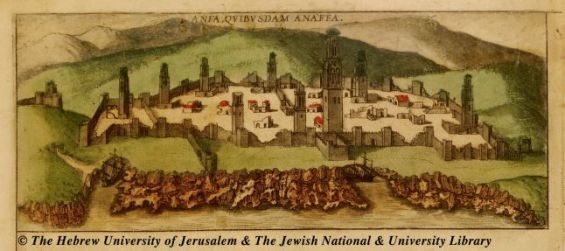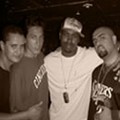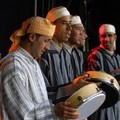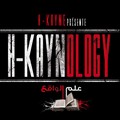Before becoming one of the biggest cities in the Kingdom of Morocco, Casablanca has been through a series of ups and downs throughout history. The city was called Anfa, an ancient Berber town that was founded in the 10th century B.C. Anfa is a Berber appellation that means «little hill» as described by the «Africa Ethnonyms and Toponyms», a book issued by the UNESCO.
The ancient Casablanca has witnessed the different changes that occurred throughout the centuries in North Africa and Morocco. Inhabited and ruled by Berbers, the area including Morocco, Algeria and Tunisia today, was nicknamed as Mauretania from the 3rd century B.C. to 40 AD.
The Roman Anfa
According to the account provided by Roman Heritage, a non-profit cultural website about Ancient Rome, with Republican and Imperial Roman sites and Roman ruins, museums, books and movies, the northern part of Morocco was occupied by Berbers. «Present-day northern Morocco, Algeria and the Spanish cities of Ceuta and Melilla (…) were inhabited by tribes of Semi-nomadic Berber Shepherds», said the same source.
«Around 800 B.C., the Phoenician villages of the Mediterranean began to create commercial settlements in the coastal zone and they mixed with the Berber population. In 814 B.C. the city of Carthage was founded (...) Around 500 B.C., The Carthaginians had formed an empire that extended to the Iberian Peninsula, the north of Africa, the Balearic Islands, Corsica, Sardinia, Sicily, and their commercial expeditions extended to the tropics of Africa».
The Roman Empire, as a result, expanded in the northern regions of Africa and Mauretania. In 15 B.C. Romans occupied the area creating a port under the reign of Octavius Augustus, the first Roman emperor controlling the Roman Empire from 27 B.C. until his death in 14 A.D. The port of Anfa established by the Romans, hence, became an important pillar linking the area to the port of Mogador (now known as Essaouira).

It is also believed that Juba II’s expedition, a Berber king of North Africa, to discover the Canary Islands was departed from the port of Anfa. The latter was named Anfus by the Romans when Mauretania was a client-state of the European Empire.
Accounts suggest that Anfa and the northern part of Morocco belonged to «Mauritania Tingina», a Roman province created after Roman emperor Claudius partitioned the Kingdom into two provinces. The ancient city of Anfa enjoyed trade and commercial ties with Volubilis until the 5th century A.D.
The Vandals' conquest
The Roman Anfa was later conquered by the Vandals, an East Germanic tribe that migrated from south Scandinavia, when they reached Spain and North Africa by the 5th century A.D. This was confirmed in a book entitled «North Africa : A History from the Mediterranean Shore to the Sahara» written by Barnaby Rogerson, a British writer and historian who indicated that «the Vandal conquest was a short-lived but dramatic interlude in North Africa’s history».
«All the Roman landlords were expelled from North Africa and their estates given to Vandal warriors who became an exclusive ruling class», stated Rogerson.
Little information exists about how the city of Anfa recovered from the Vandals’ conquest. In 744, a Berber kingdom called Barghawatas, belonging to the Masmuda confederacy, settled down between the Bou Regreg River and the Oum er-Rbia to the south of the Roman port (Anfus).

In his book, the British historian described Casablanca as the Punic Port of Anfa. He indicated that the port was «the capital of the Berghouata heresy from the 8th to the 12th century».
When the Portuguese destroyed Anfa
Controlled by the Berber dynasty, the city of Anfa was targeted by the Portugese during the 15th century. Barnaby Rogerson explained in his book that «the corsair port was attacked by the Portuguese in 1486 and 1515 and held by them from 1575 until the Lisbone earthquake of 1755».
A similar account was provided by Paul Puschmann, assistant professor of economic, social and demographic history at Radboud University, Netherlands. He pointed out in his book «Casablanca : A Demographic Miracle on Moroccan Soil ?» that «during the latter part of the fifteenth century the Portuguese armad attacked Anfa in a bid to rid it of local pirates».
«Although the Portuguese did not occupy the medina, the local population abandoned the town with the result that Anfa turned into a ghost town».
Anfa couldn’t survive the Portuguese raid and became an abandoned city until 1770. Puschmann refers in his book to the period that followed the Portuguese attack stating that «three centuries passed before Anfa arose out of its ruins in 1770, thanks to the military plans of Sultan Mohammed ben Abdallah, who tried to free the Moroccan Sultanate from foreign invaders».

Anfa renamed Dar El Beida
Thanks to Mohammed ben Abdallah, Sultan of Morocco who ruled from 1757 to 1790 under the Alaouite dynasty, Anfa was protected from foreign attacks and rose from its ashes again. The same account suggests that «Casablanca functioned as a bastion against alien attackers at this time».
«The Sultan built extraordinary high city walls and stationed a garrison in the Medina. However, he also built a mosque, a koranic school, public bathhouses and mills and under his command the city was repopulated by Chleuh Berbers from the region of Essaouira and the environs of Meknes».
It is under the reign of Moulay Mohammed ben Abdallah that the city of Anfa was named Dar el Beida, an appellation that exists till now. «The reviving of the city was coupled with a change of name : Anfa became Dar el Beida, although Europeans started to talk more and more about Casablanca», concluded Paul Puschmann.
The name Anfa now refers to a district of the modern Casablanca city. The metropolis now is considered internationally as an economic hub hosting a number of multinational companies and its port is one the busiest ones in North Africa.





 chargement...
chargement...













